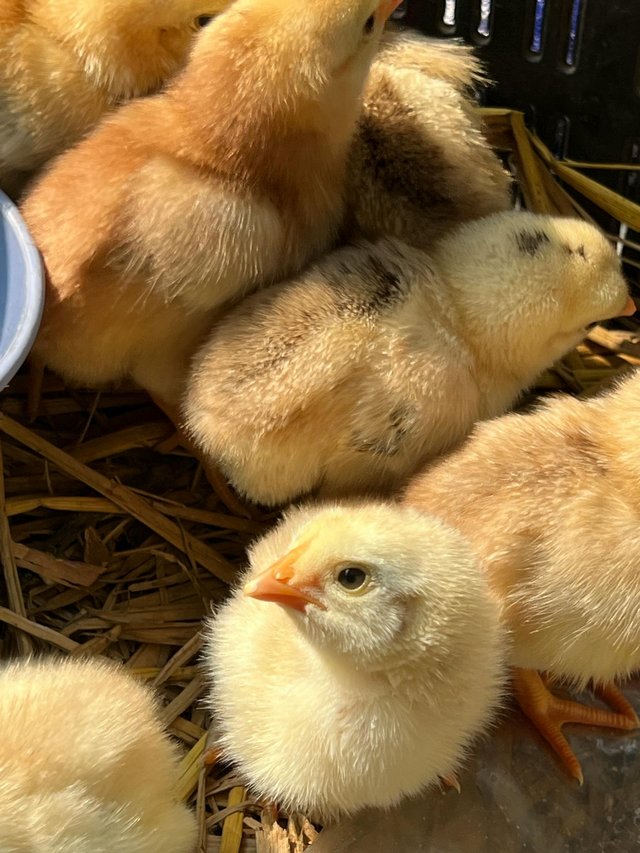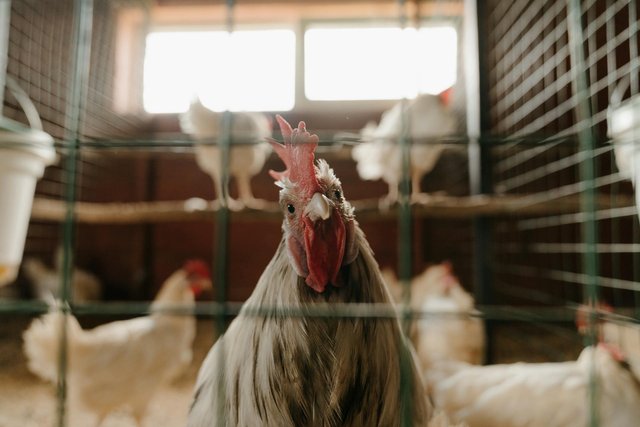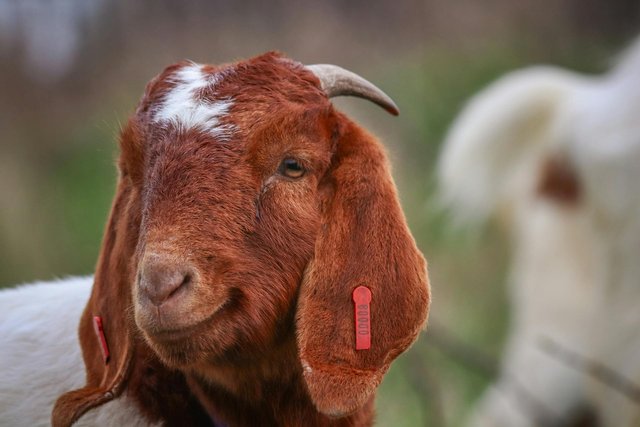Basic Knowledge in Agriculture #29
To start with, agriculture is more sweet in practice than words. Most time, finding words to explain, narrate, describe it practices most time leave some loopholes. So, in this contest organize by @hive-118902 my words will be well picked.
To Steem-agro Team that keep this community running @xkool24 @ruthjoe @ahsansharif @ninapenda @muhammad-ahmad @djanita @imohmitch @huraira50 my esteem appreciation.
Thank you, @disconnect because you always make it easy for me to spot out contest of my interest.
| 1 What do you understand by Breeding |
|---|
Better understanding of anything is always in it simplest term. Hence, in simplest term: Breeding, is the very act of intentionally been specific in choosing plants or animals to reproduce, with possible goal of passing on desirable traits to their offspring.
In agriculture, this involves refinement of the genetic quality of crops and livestock to boost yield, resist diseases, adapt to environmental stress and improve overall performance.
From instances and more break down broader view, breeding is the science behind the hybrid corn in the U.S. that doubles productivity or the high-yielding dairy cattle in the Netherlands. In my country Nigeria, breeding is what my neighbor, Mr. Okon, does when he selects only the viable, fastest-growing cassava stems from his last harvest to plant in the next season. Mr. OKON is not a geneticist, but through many season of cultivation and observation, he knows that selecting the best gives better results. That’s practical breeding in action.
| 2 Discuss on the Breeding Types |
|---|
I grew up in rural environment and I witnessed different breeding types before I even get to study them in school. Let's say, school taught me the names of practical things I knew.
To continue, there are several breeding types and each has its purpose depending on the desired outcome. I will do my discussion breakdown using Nigerian illustrations:
a. Inbreeding
Inbreeding is suitable for preserving certain animal trait and this involve the mating of closely related organisms, often used to preserve such animal traits. It's common among indigenous chicken keepers in rural Nigeria who breed from the same family stock. For instance, there is a man, in my village, who uses eggs laid by her healthiest hen to raise new chicks. While this can maintain hardiness, too much of it over time leads to weak birds and low egg production which was a reason why his business almost collapse because the gene pool becomes too narrow.
b. Outbreeding (Crossbreeding)
This aspect is just kind of opposite of inbreeding. Outbreeding involves breeding unrelated individuals to combine strengths and many individual crossbreed for viability. It’s widely practiced across Nigeria. For example, a poultry farmer might cross Noiler chickens (from a hatchery) with local breeds to create offspring that grow faster and still withstand local diseases. My cousin, Idongesit did this and now sells large birds in eight weeks instead of five months and he still practice this till date.
c. Line Breeding
This will be a bit different but relatable. This is a more controlled form of inbreeding, used when farmers want to keep a desirable trait like disease resistance in pigs or goats. A key aspect to look into is the commercial hub breeders who often use line breeding for large white pigs to improve weight gain and feed efficiency.
d. Self-breeding (Self-pollination)
Tomatoes, beans and rice are typically plants self-breeding naturally occur in. This could be like where a single plant fertilizes itself. Agricultural researchers often use this to create pure lines before developing hybrids. It’s less common at the local level but used in seed companies.This one is what I did learn in school though I am looking forward to applying this knowledge.
e. Artificial Insemination (AI)
I witnessed this when I travel to meet with my uncle in northern part of Nigeria were cows are raised and breeed in large quantities.Though not a breeding type, this is a method of breeding. Cattle farmers in parts of Oyo and Kano now use this method to introduce exotic dairy genes into their herds without transporting bulls. It reduces cost and enhances safety.
| 3 Benefits of Breeding |
|---|
Just like every other thing has their benefits, breeding plays a vital role in transforming, smallholder and commercial agriculture into more productive field. Here are some major benefits, with everyday Nigerian examples:
a. Improved Yield
Breeding makes it possible to have more production or meat per animal. My neighbor, who once harvested six bags of maize, now gets ten from the same plot after switching to an improved seed through breeding.
b. Resistance to Pests and Diseases
Improved cassava varieties like TMS 419 which are popular in Edo state and Benue state are bred to resist mosaic and bacterial blight. It means less chemical spraying and less crop loss.
c. Faster Growth and Maturity
Imagine without crossbred broilers in Nigeria with her demanding high population. Crossbred broilers can reach market weight in 6 weeks, while local chickens may take 5 months. For vegetable farmers, hybrid okra and pepper reach harvest in 40 days boosting market turnover and ease demand chain.
d. Adaptability to Local Conditions
Through breeding, crops like drought-tolerant maize or salt-tolerant rice are now available. In Kano, farmers use early-maturing millet varieties to cope with shorter rainy seasons caused by climate change.
e. Cost Efficiency
Breeding reduces losses and dependence on chemicals, improving profit margins. A fish farmer who uses fast-growing hybrid catfish spends less on feed and gets better returns in 3 months.
f. Income Boost and Economic Empowerment
Higher productivity leads to more food and income. My aunt, who switched from local to improved yam seedlings, now supplies tubers to a school canteen contract in Uyo, something she couldn’t have done before.
| 4 What are the Applications of Breeding |
|---|
Breeding has both scientific and practical applications, and here are key areas where it is changing agriculture:
a. Livestock Improvement:
Breeding has helped upgrade the productivity of Nigerian livestock. The introduction of crossbred goats (e.g., Sokoto Red with Boer goat) results in kids with faster growth rates and better meat quality.
b. Crop Variety Development:
Agencies like IITA and National Agricultural Seed Council develop new crop varieties through breeding. Farmers in Nasarawa now plant flood-resistant rice because breeders responded to climate challenges.
c. Fish Farming (Aquaculture):
Breeding is used to select catfish or tilapia species with rapid growth and high feed conversion. My neighbor who bought hybrid fingerlings from a reputable hatchery now records better survival rates and more uniform sizes.
d. Poultry:
In Nigeria’s South-West, AI and selective breeding have produced layers that give 300+ eggs per year. Local hatcheries now supply improved chicks tailored to regional preferences.
e. Climate Resilience
With unpredictable weather patterns, breeding has created crops like drought-tolerant maize or heat-resistant tomatoes. It’s the reason farmers in Zamfara are able to grow maize with minimal irrigation.
f. Disease Resistance
Instead of relying heavily on pesticides, breeding provides natural solutions. For instance, tomato varieties resistant to blight are now available to farmers in Jos and Ibadan, where outbreaks used to destroy hectares.
g. Biodiversity Conservation
Breeding also helps preserve unique Nigerian species. NGOs working with Fulani herders use controlled breeding to conserve native cattle breeds without losing productivity.
I invite on @spektro224 @goodybest @ngoenyi
To participate in the contest.
Best Regards @berda01 |
|---|



https://x.com/princewill_okon/status/1919781150060318736?t=dmHOydUvpCu6Dv0ZTLn2tg&s=19
Welcome to Steem-Agro! Here is your assessment:
MOD's Comment/Recommendation:
Note: We also suggest, if you are new to the platform, that you read the 3 newly pinned posts in the Newcomers' Community which contain many guides and tips to help you get set up quickly and don't forget to share your content on other social networks like X.com to help promote the platform.
Remember to engage with other users by making valuable comments. This will increase your chance of receiving rewards and attention.
Remember to always share your post on Twitter using these 3 main tags: #steem #steemit $steem